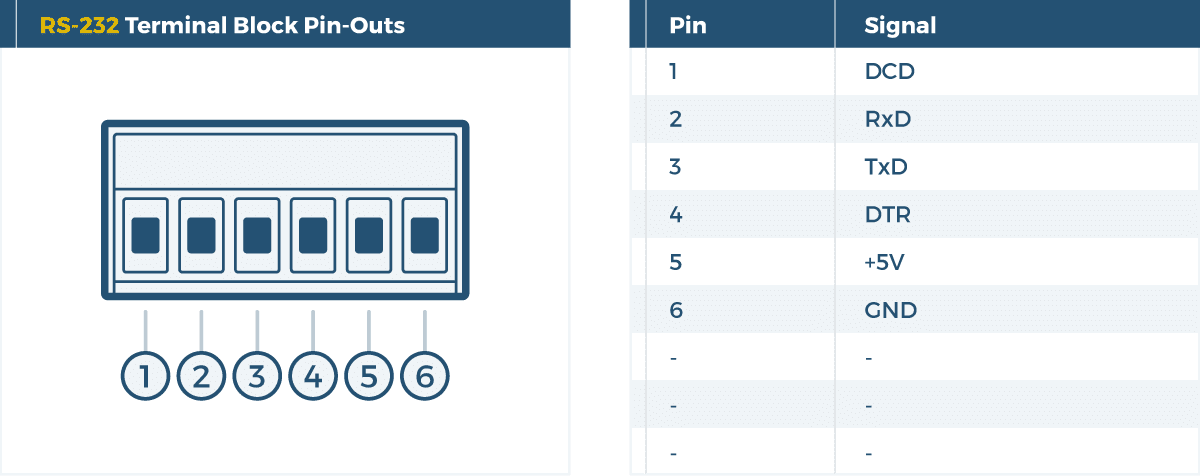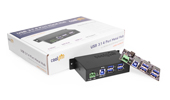As with any technology in the communications world, serial RS232 and RS485 have some points at which they show weaknesses that must be accounted for. These are points where they are prone to issues that can interrupt communications, cause losses of data, result in incompatibilities with other devices, or show performance that is not satisfactory for their contemporary technological settings. If you have RS232 or RS485 ports and cables installed in any application and wish to maintain the serial communication standard as part of an industrial communications network, it’s quite helpful to learn about some of the more common issues that may arise for this communications standard.
While serial RS232 and RS485 are still more than capable of performing certain communications with reliability and efficiency, they are still an older technology subject to some issues. However, when these issues are understood and accounted for, the serial communications standard of RS232 and RS485 can truly perform those roles with the integrity in communication they were originally designed with.
Unsatisfactory Speeds
The RS232 and RS485 serial port communication can only send one bit of information at a time. This results in communications are slower than may be satisfactory. In today’s context, these single bits of data can be unsatisfactorily slow because of our contemporary expectations of communications speeds and because RS232 and RS485 serial communications are capable of being relatively efficient given the right circumstances and implementation.
It’s not uncommon for this to be a non-issue when performing simpler communications in which these speeds are sufficient, such as in some process automation (chemical plants, brewing, paper mills), factory automation (automobile production, metal fabrication), HVAC, security, motor control, and motion control. The fastest of the RS232, RS422, and RS485 family of protocols, maxes out at 10 Mbps, enough for most legacy applications, with rates of 300 bps to approximately 115,000 kbps is sufficient.
However, this is sometimes not quite the speeds modern applications or somewhat updated legacy applications and devices need. This is where UART comes in. A UART (aka Universal Asynchronous Receiver-Transmitter) is a way to convert parallel data from the host processor into serial data. These integrated circuits contain software that will convert single data bits into 8-bit, parallel data, thus speeding up RS232 communications.
Flow Control
The absence of flow control, or handshaking, in some RS232 and RS485 ports, can result in lock-up or buffer overflows. Flow control is the process of preventing communication of bits from happening too fast. Too many bytes will inevitably overrun the terminal/modem/computer that the data is being sent to or received from. FIFO (the buffers), which stands for food first-in-first-out, are susceptible to overrun, in which data is backed up and subsequently degraded, damaged, or lost, and can cause errors in the computer or even freezing. UART is an effective way to minimize these issues too. UART is triggered at certain levels, which indicates how many bytes should be sent back to it.
Miscommunication Between DTE & DCE
Problems with communication between DTE and DCE devices can arise in RS232 communications. This can happen because of a less-than-ideal cable connection between the RS232 cable. Sometimes it arises because the connection is incorrectly installed or insecure. An easy solution is to simply disconnect the RS232 cable and reconnect for a fresh connection.
Pin Configuration Issues
Another problem that may arise is incorrect pin configuration. This can arise from confusion about the male and female port connections. Mating them correctly can be surprisingly confusing in difficult and complex industrial environments or when trying to be implemented by nonprofessionals in more complex star networks. Intermediate cables can be helpful in these situations. An RS232 DB gender change adapter is a useful tool for getting around these issues, and these are usually quite affordable solutions to pin configuration issues. Pin-out diagrams are available for each of our products which provide engineers with a visual and show the purpose of each of the pins on our serial cable/adapters.

By better understanding legacy serial communication devices at both their strong point and their weak points, it becomes clear that with high-quality adapters, gender changers, and cables, this legacy communication device can have decades more usefulness and cost-saving practicality embedded within it. Furthermore, consulting industry experts who are familiar with the technology and these products can go a long way in keeping serial communications devices running smoothly in larger, industrial settings that require efficiency and quick solutions.



















